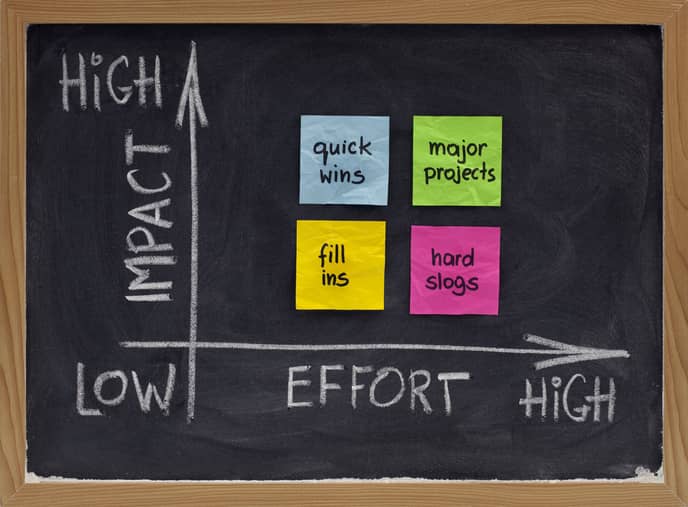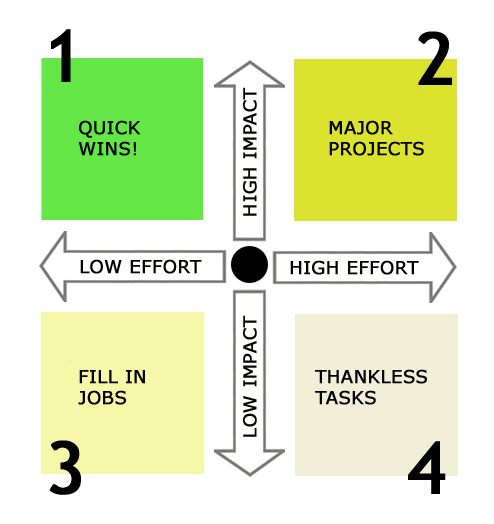A project charter serves as a detailed road map for a project, clearly defining the problem it will address, who will participate, the intended result and the project’s deadlines. It’s a document that deals in detailed certainty and provides strong guidance, keeping team members on track.
Creation of the project charter ranks at the top of the “first project steps” list (it’s in the Define phase of a DMAIC project). It will set a start and end date, name team members and provide a time frame to accomplish tasks within the project. A Black Belt leads most projects while a Green Belt assists. The two take the lead on creation of the project charter.
It’s a must for every project team that wants to achieve success.
The Four Key Areas of a Project Charter
While Lean and Six Sigma practitioners may differ in how they approach the details of a project charters, each typically includes four critical components.
The Business Case
This section makes the argument for the necessity of the project. It should provide a quick way for organizational leaders to understand the immediate need for the project and how its completion supports business success.
The business case should answer these questions:
- Why is this project important to the organization’s future?
- Why is it best to do the project now rather than later?
- What are the potential costs of not doing the project?
The Problem Statement
This directly addresses the challenge that the project team plans to overcome. The problem statement cannot contain a vague description of potential issues in a process. It needs to contain detailed information about a current problem and how it impacts the organization’s ability to meet customer needs. The problem statement should cover:
- What is the problem?
- Where is it occurring?
- How is it impacting the delivery of products and services to customers?
There also are two important “don’ts” in a problem statement. Don’t assign blame for the problem. And don’t state that a solution has already been found and needs evaluation. If that is the case, why do you need a full project team on the issue?
The Goal Statement
This directly and simply states the project goal. For example: “We will decrease the spend on office supplies 10% by Jan. 1.” “We will increase the number of on-time deliveries 20% by Oct. 1.” The goal statement should plainly state:
- How something will be increased, reduced, added or eliminated
- The baseline and target goal, either in numbers, dollar figures or a percentage
- The date projected to reach the goal
This is one reason why Lean and Six Sigma attract so many professionals – there’s no blurriness or uncertainty. A project team is playing horseshoes, but rather defines a target and then hits it precisely.
The Project Scope
Even those who have never worked on a project or been involved with process improvement have likely heard the term “scope creep.” It involves taking actions outside the original perimeters of a project. Those original perimeters are established in this section of the project charter.
But that’s just one aspect of the project scope, which should include:
- The first process task, which defines the beginning of the project
- The last process task or step, which defines the end of the project
- Defining what is “in-scope,” that is, the factors (departments, personnel, tools, equipment, etc.) that are within the scope of the project and under your control
- Defining what is “outside of scope,” which are the factors that are outside the scope of the project and not under your control
Without these clear definitions, the dreaded scope creep can appear in the form of project updates or change requests that were originally in the “outside of scope” area. This can result in projects getting stalled, the direction changing and/or the project result not meeting the initial business goal.
What Does Living Document Mean?
When people call the project charter a “living document,” what exactly do they mean? Metaphorically, it means it is not set in stone. In practical application, the concept offers flexibility to a project team. As the project unfolds, teams come across information that changes the project. As a living document, the four main areas of the project statement can get amended, if needed, to alter the goal or scope.
A project charter clarifies not only the challenge getting addressed, but also what success looks like when that challenge is overcome. It should be the first step in any Lean Six Sigma project.



